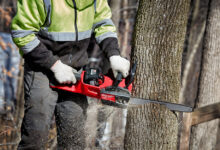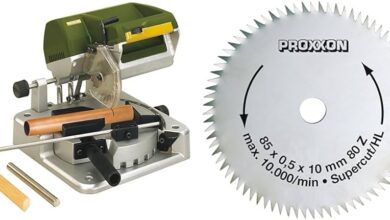Contents
Chainsaw Troubleshooting Tips and Detailed Explanations
Chainsaws are indispensable tools for homeowners, contractors, and landscapers alike. However, like any other power tool, chainsaws can occasionally encounter problems that can hinder their performance. When faced with a malfunctioning chainsaw, troubleshooting the issue can be daunting, especially for beginners.
This comprehensive guide will provide you with a thorough understanding of common chainsaw problems and their corresponding solutions. By following these troubleshooting tips, you can confidently diagnose and resolve issues to restore your chainsaw’s functionality.
Before delving into the specific troubleshooting steps, it’s essential to note a few safety precautions:
- Always disconnect the chainsaw from its power source before performing any maintenance or troubleshooting.
- Wear appropriate safety gear, including gloves, safety glasses, and hearing protection.
- Ensure the chainsaw is in a stable position before starting any work.
- Avoid touching the chain or guide bar when the chainsaw is running.
By adhering to these safety guidelines, you can minimize the risk of injury while troubleshooting your chainsaw.
Strengths and Weaknesses of Chainsaw Troubleshooting Tips
Strengths:
- Provides step-by-step guidance for diagnosing and solving common chainsaw problems.
- Empowers users to maintain and repair their chainsaws independently, saving time and money.
- Improves chainsaw performance and longevity by addressing underlying issues promptly.
- Increases user confidence in handling and operating chainsaws.
- Reduces the need for professional repairs, making chainsaw ownership more cost-effective.
Weaknesses:
- May not cover all possible chainsaw problems or complex malfunctions.
- Troubleshooting can be time-consuming, especially for beginners.
- Requires basic mechanical knowledge and troubleshooting skills.
- Depending on the problem, specialized tools or parts may be necessary.
- Attempting to repair complex issues without proper expertise may worsen the problem or void the manufacturer’s warranty.
| Tip | Problem | Solution |
|---|---|---|
| 1 | The chainsaw won’t start | Check for fuel, air filter, spark plug, and pull cord issues |
| 2 | The chain is loose | Adjust the chain tensioner |
| 3 | The chain is dull | Sharpen or replace the chain |
| 4 | The chainsaw is overheating | Check for clogged air filter, muffler, or oil pump |
| 5 | The chainsaw is leaking oil | Inspect the oil seals, lines, and pump for damage |
| 6 | The chainsaw is vibrating excessively | Check for loose parts, damaged chain, or unbalanced flywheel |
| 7 | The chainsaw is making strange noises | Listen for grinding, scraping, or rattling sounds to identify potential issues |
FAQs
-
Q: What is the most common problem with chainsaws?
A: The most common problem is a lack of maintenance, which can lead to a variety of issues, including a dull chain, loose chain, or clogged carburetor.
-
Q: How often should I clean my chainsaw?
A: Cleaning your chainsaw after each use is recommended to remove dirt, debris, and sawdust that can accumulate and affect performance.
-
Q: What is the proper way to sharpen a chainsaw chain?
A: Sharpening a chainsaw chain requires a specific filing angle and depth gauge setting. Consult the manufacturer’s instructions or refer to a qualified professional.
-
Q: How do I know when my chainsaw chain is too loose?
A: A loose chain will sag noticeably when the chainsaw is running. It should be tightened until it fits snugly around the guide bar.
-
Q: What are the signs of a clogged carburetor?
A: Difficulty starting, poor engine performance, and excessive smoke are all potential indicators of a clogged carburetor.
-
Q: How do I prevent my chainsaw from overheating?
A: Regular cleaning, using the correct oil-to-gas ratio, and allowing the chainsaw to cool down after prolonged use can help prevent overheating.
-
Q: What should I do if my chainsaw is leaking oil?
A: Inspect the oil seals, lines, and pump for damage. Replace any worn or damaged components and check the oil level regularly.
-
Q: How do I reduce excessive vibration in my chainsaw?
A: Check for loose parts, a damaged chain, or an unbalanced flywheel. Tighten any loose bolts, replace the chain if necessary, and have the flywheel balanced by a qualified professional.
-
Q: What are some warning signs of a failing chainsaw?
A: Reduced power, difficulty starting, excessive smoke, and abnormal noises can indicate potential problems that require attention.
-
Q: Can I use any type of oil in my chainsaw?
A: No, use only chain oil specifically designed for chainsaws, as other oils may not have the proper lubrication properties and can damage the chain and engine.
-
Q: How do I store my chainsaw properly?
A: Store the chainsaw in a dry, clean place, away from direct sunlight. Drain the fuel tank, clean the chain and guide bar, and lubricate the moving parts before storage.
-
Q: Is it safe to operate a chainsaw with a damaged chain?
A: No, a damaged chain can pose a significant safety hazard. It should be replaced immediately to prevent injury.
-
Q: What are the benefits of regular chainsaw maintenance?
A: Regular maintenance extends the life of the chainsaw, improves performance, prevents major malfunctions, and ensures safe operation.
Conclusion
Chainsaw troubleshooting tips empower users to diagnose and solve common problems, enhancing their chainsaw’s performance and longevity. By following these tips and practicing proper maintenance, you can minimize downtime, reduce repair costs, and operate your chainsaw safely and efficiently.
Remember that chainsaw troubleshooting requires both knowledge and caution. If you encounter complex issues or are uncertain about the solution, it’s always advisable to consult a qualified professional to avoid further damage or injury.
By taking a proactive approach to chainsaw maintenance and troubleshooting, you can ensure years of reliable service from your invaluable tool.









